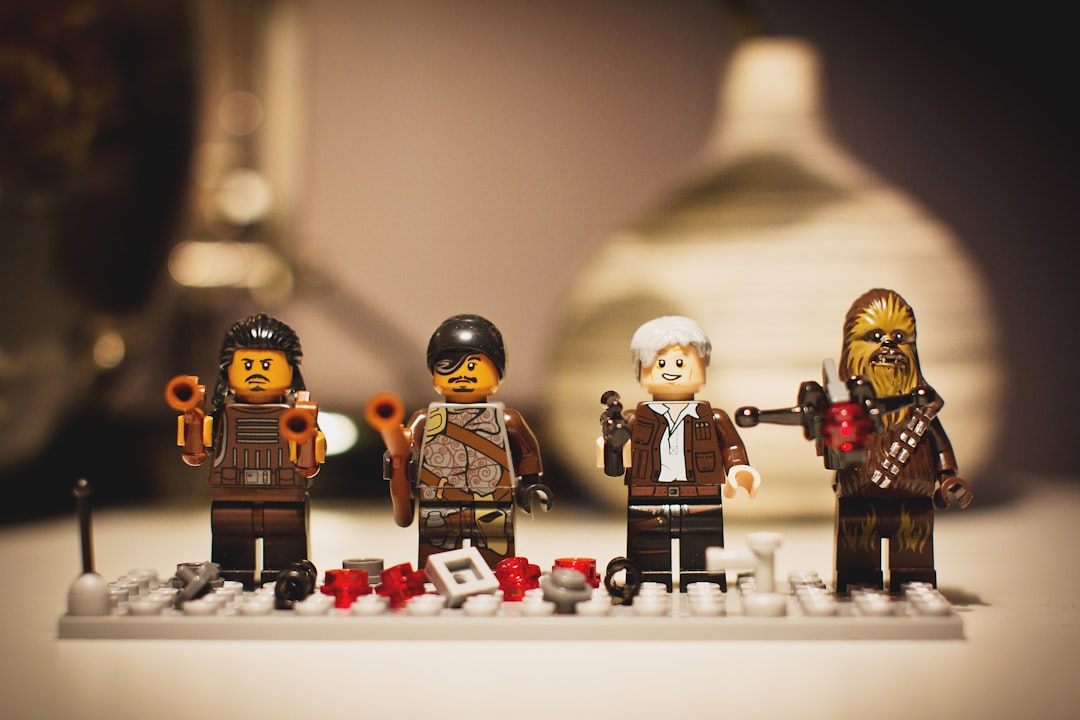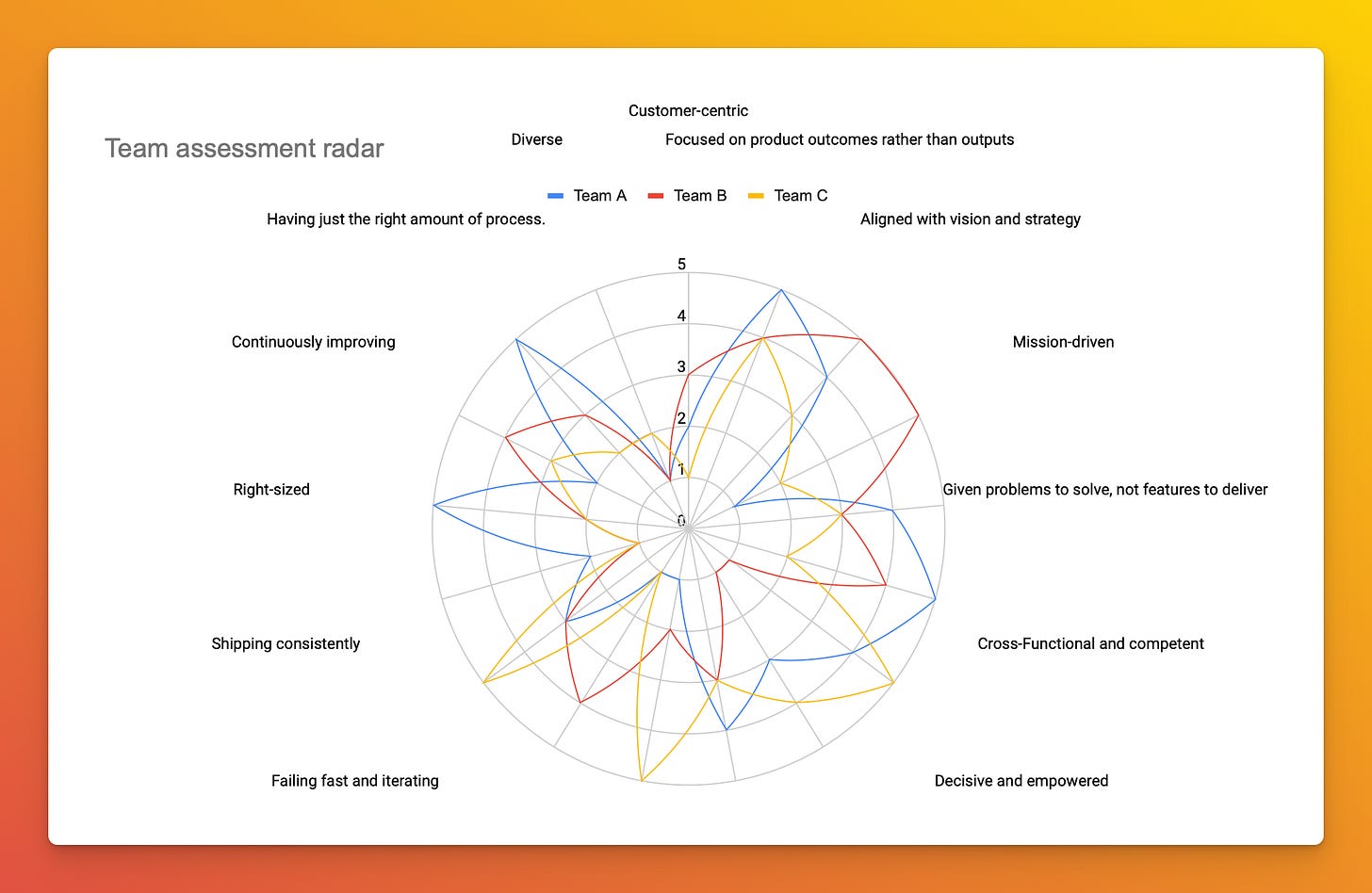What does success look like for product teams? Assess your teams for 17 traits that the best product teams have in common.
Assess your teams in 12 simple steps and increase their chances of being successful product teams.
👋 Hey! My name is Piotr, and welcome to my newsletter on building blocks for successful tech product companies. Subscribe to get free step-by-step guides on best practices used by the best companies every second week!
To build great products, you need great product teams. But what does great look like? What are the traits that the best product teams have in common? In this post, I'll answer both and provide a free tool to assess your teams for those traits and a step-by-step guide on how to get better.
This post is part of the series on how to build great product teams.
Future posts will include for example:
What does success look like for product teams?
By successful product team, I mean a team that delivers consistent customer and business value.
What traits do successful teams have?
To deliver consistent product value, teams must be:
Customer-centric
Focused on product outcomes rather than outputs
Aligned with vision and strategy
Mission-driven
Given problems to solve, not features to deliver
Cross-functional and competent
Decisive and empowered
Autonomous but collaborative
Accountable for their work end-to-end
Innovating
Data-informed
Failing fast and iterating
Shipping consistently
Right-sized
Continuously improving
Having just the right amount of process.
Diverse
You can explicitly design teams (even existing ones!) around those traits to significantly increase your chance of delivering consistent product value.
Traits explained
Let's break those traits down one-by-one.
✨Customer-centric
Successful product teams are laser-focused on delivering value to customers. They talk to their customers, understand their needs, and create products that solve their problems.
✨Focused on product outcomes, not outputs
Successful product teams focus on product outcomes. This is how they measure their performance. Instead of releasing features, they focus on delivering customers value and moving a needle on the right product metrics.
✨Aligned with vision and strategy
Successful product teams are aligned with product vision and strategy and use them to align and focus.
✨Mission-driven
Successful product teams have a clear mission that gives them a purpose to exist. When a team is clear on its mission, it's much easier for them to stay focused and motivated.
Example mission: to create a delightful experience for our customers to return to us daily.
✨Given problems to solve, not solutions to deliver
Successful product teams are given problems to solve rather than features to deliver. This allows them to approach the problem from different angles and develop innovative solutions they genuinely own.
✨Cross-Functional and competent
To achieve its mission, a product team needs to be cross-functional. That means they must have all critical roles as core team members. This typically means staffing teams with competent engineers, product designers, and product managers working towards the same goal. All these three roles should collaborate to find solutions that are valuable, usable, doable, and working for the business.
✨Empowered and decisive
Successful product teams are empowered and can decide on their own. These teams are given the autonomy and resources to do their best work. They need to be fast - they should not be seeking constant approval or drowning in corporate bureaucracy.
✨Autonomous but collaborative
Successful product teams have a healthy balance between autonomy and collaboration. To act fast, teams must have as low dependencies on others as possible. But they need to understand when and how to collaborate with other teams when necessary.
✨Accountable for Their Work End-to-End
Successful product teams are accountable for their work from start to finish. They're not handing over tasks to other teams. Instead, they take ownership of everything they decide to build, from initial concept to final delivery, maintenance, and monitoring.
✨Innovating
Successful product teams are innovative. They're always looking for new ways to improve their products on behalf of their customers. They're constantly questioning the status quo. They are continuously searching for new ways and technologies to disrupt the industry.
✨Data-informed
Successful product teams are data-driven. They understand customer behaviors and use quantitative and qualitative data to form their hypothesis. They use data to inform their decisions and validate their ideas.
✨Failing fast and iterating
Successful product teams know that at least half of their ideas won't work. They embrace it. They use product discovery to quickly find solutions worth doing (customer interviews) and iterate fast (prototype, A/B tests).
✨Shipping Consistently
Successful product teams ship consistently. They have an excellent continuous delivery platform and often deploy and recover fast.
✨Right-Sized
Successful product teams are right-sized for the job they have. A team that is too large can be unwieldy and difficult to manage, while a team that is too small may need more resources and expertise to achieve its goals. The right-sized team will be able to work effectively and efficiently to deliver the product.
✨Continuously Improving
Successful product teams are always looking for ways to improve. They iterate on the ways of working technologies they use.
✨Having Just the Right Amount of Process
Successful product teams have just the right amount of process. Too much process can slow down the team and stifle creativity, while too little process can result in disorganization and chaos.
✨Diverse
Successful product teams are diverse in terms of background, experience, and perspective. This diversity helps to ensure that the team can approach problems from different angles and develop innovative solutions.
⚡️ 12 steps to assess the traits of your teams
Product Blocks is all about practical advice you can apply the next day.
Here's a step-by-step guide on how to assess your team traits using Product Team Trait Assessment Radar:
Duplicate Product Team Trait Assessment Radar spreadsheet:
Clear all the scores
List the teams you want to assess
Invite the right people to help you with the assessment.
Rank and discuss every trait for each team using a 1-5 scale. Use your judgment. There is no hard science here.
Prioritize which teams need the most help.
Pick 3-5 traits per team you want to focus on. Less is better.
Discuss your assessment with your teams, and understand their perspective.
Brainstorm success metrics/scenarios for each trait you want to work on.
Plan specific actions per each trait you want to work on.
If you need help prioritizing traits or looking for inspiration on how to move the needle on those them, browse Blocks Catalog or reach out to me.
Every 3 months, repeat the assessment.
Closing thoughts
It's worth ensuring your product teams have all of the mentioned traits. You'll see much difference in their motivation, the value they bring, and the talent they attract. The return on investment for your company and your customers will be massive.
Are you finding this post valuable?
Subscribe to receive free step-by-step guides like this every two weeks:
Share this post with your friends and your team, and your manager on Slack:
Show your support by clicking on the ♡ heart icon below.
Good luck, have fun and see you in a bit!
Piotr 👋




